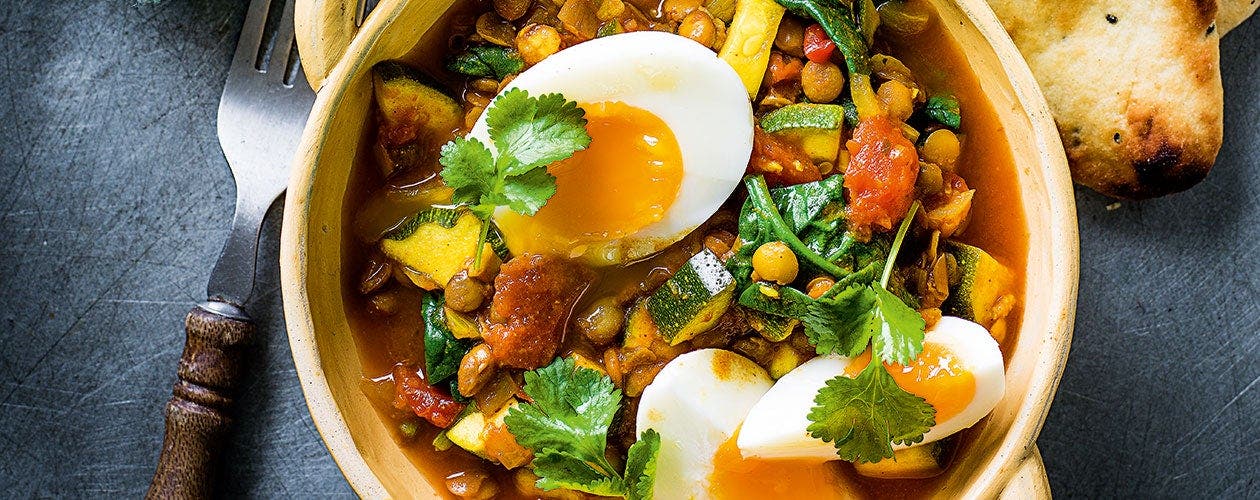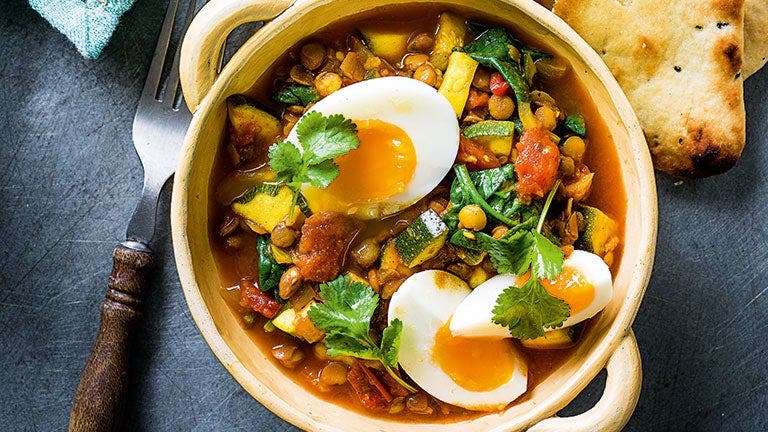6 foods that fill you up


Sometimes, you’re just hungry. You've almost reached your Budget for the day, but your tummy is rumbling and there's no two ways about it - you need food! But what if you planned your meals around foods that keep you full? We've put together a list of the most filling foods to prevent hunger, so you feel satisfied and energised throughout the day.
Healthy filling meals and snacks will also help you stay on track with your healthy eating plan. So, if you're searching for the most filling foods per calorie or filling foods for weight loss, look no further. Here are 6 science-backed picks to add more staying power to your meals and snacks.
1. Oats
Oats are rich in soluble fibre, a type of fibre that becomes viscous and gel-like when combined with liquid, says Wendy Bazilian, DrPH, RD, coauthor of Eat Clean, Stay Lean: The Diet and owner of Bazilian’s Health in San Diego. Oats are thought to impact appetite-reducing hormones, which makes it more likely you’ll eat less. They also leave your stomach at a slower rate than simple carbs such as those found in doughnuts, for example.
But there’s one important caveat: because soluble fibre needs liquid to thicken up, oats seem to be the most filling when they’re cooked in water or milk to make porridge. “A muffin or breakfast bar made with oats probably won’t have the same level of effect, since they don’t have as much water,” Bazilian says.
2. Beans
Toss them into salad, use them in soup, or purée them into a dip. Adding beans and legumes like chickpeas, black beans, and lentils to a meal increases satiety by an average of 31%, according to a recent scientific review published in the journal Obesity.
When it comes to fullness, these tiny powerhouses seem to pack a one-two punch. They are complex carbohydrates, which deliver energy and they are rich in fibre. But they also have protein, which takes longer to process — which helps you stay satisfied for longer. “It’s a slow, sustained release of blood sugar, which can lengthen satiety,” Bazilian says.
3. Non-starchy vegetables
Veggies like leafy greens, broccoli, cauliflower, asparagus, peppers and celery have a low calorie density. That means that they’re low in calories for their serving size—but because they’re high in water and fibre, they have more volume, which means they take up more space in your stomach. “If you choose foods that have a lower density of calories in each bite, you’ll get a bigger portion for your calorie needs,” says Barbara Rolls, PhD, Director of the Laboratory for the Study of Human Ingestive Behaviour at Penn State University and author of The Ultimate Volumetrics Diet.
Case in point: You’d have to eat more than 400g of cooked baby spinach to consume 100 calories, but you’d get the same amount of calories from just 1 tablespoon of butter!
4. Eggs
Have them in the morning, and you just might feel fuller all day long. One study found that women who were overweight reported that they consumed less food for up to 36 hours when they ate eggs for breakfast, compared to when they ate bagels.
That could be because eggs are packed with protein (one large egg delivers 6g), which digests at a slower rate than carbohydrate-based foods and helps keep you satisfied for longer, says Bazilian. But that’s not all. A small study also suggests that eggs could suppress the production of the hunger hormone ghrelin, which may help stop the urge to nosh.
5. Greek yogurt
285g Greek yogurt delivers around 22g protein, which will help reduce the desire to eat and keep you feeling fuller for longer. What’s more, it’s relatively high in water, so it adds volume in your stomach. Combined, those two things will keep you satisfied, Bazilian says.
Of course, not all yogurts are created equal. Plain yogurt is a better choice than the flavoured stuff, since it’s free from added sugars which, in excess, have been linked to increased risk of disease.
6. Brothy soup
Starting with a soup can help curb calorie intake at mealtime, some studies show. Like non-starchy vegetables, soups have a low-calorie density—all that liquid will help fill you up for relatively few calories, Rolls says.
The key is sticking with broth or tomato-based soups instead of cream-based ones. Think minestrone or butternut squash. For even more staying power (for example, if you’re having soup for a meal) consider adding a source of lean protein like shredded chicken, Rolls says.
